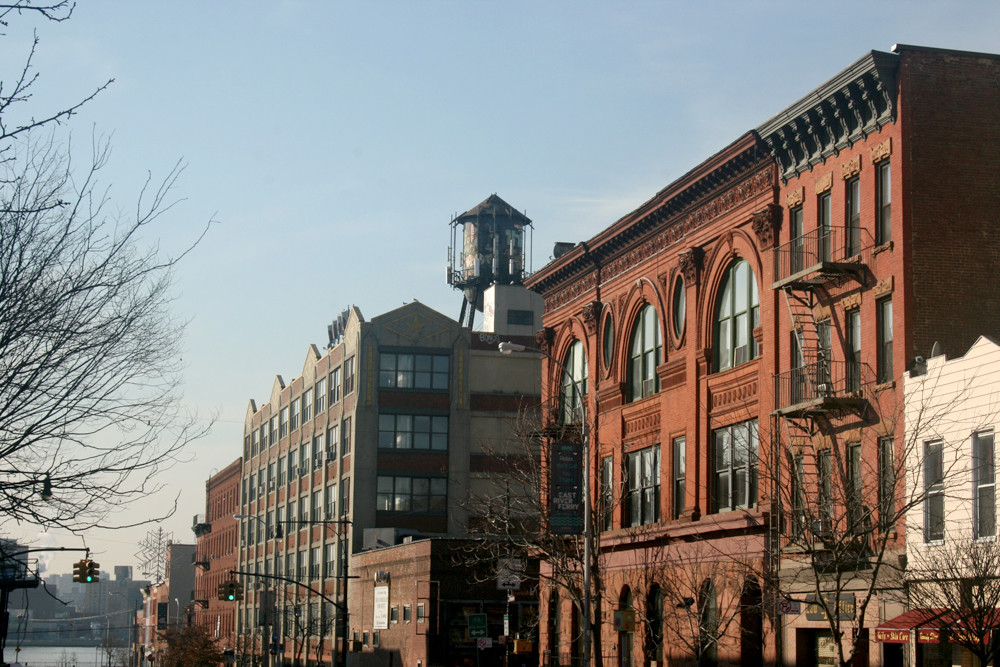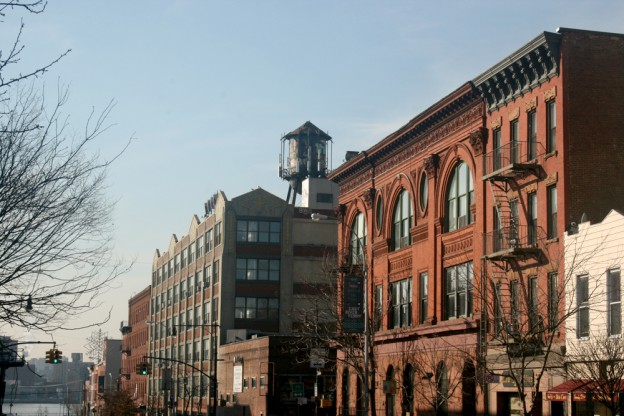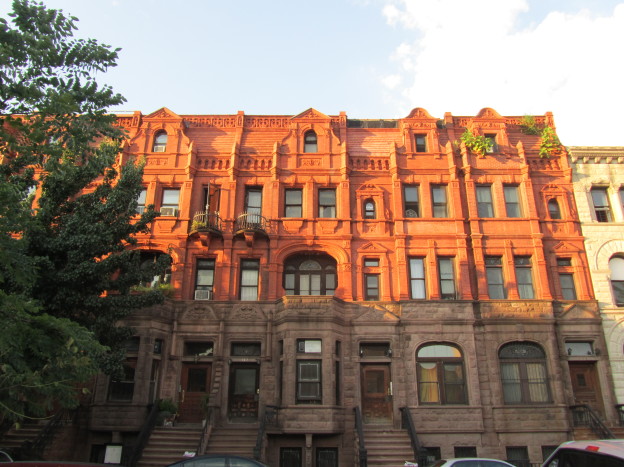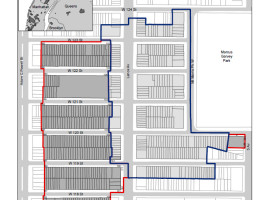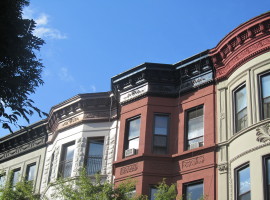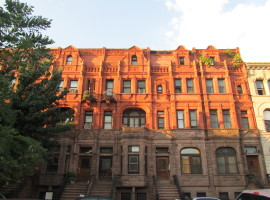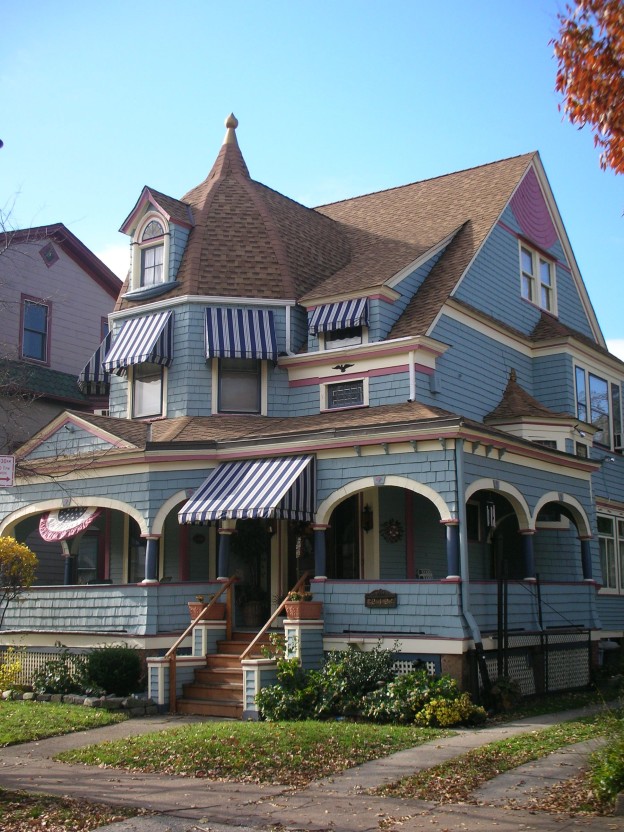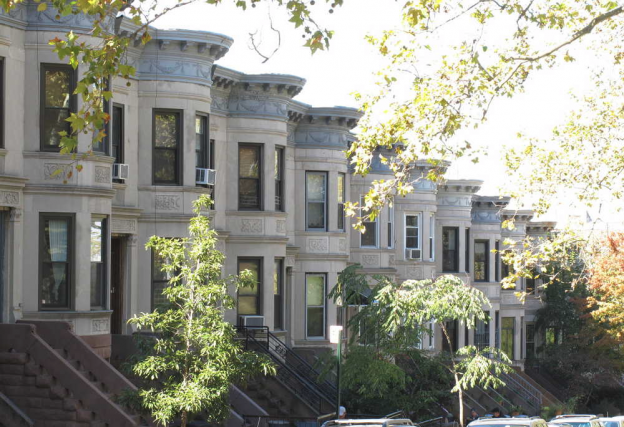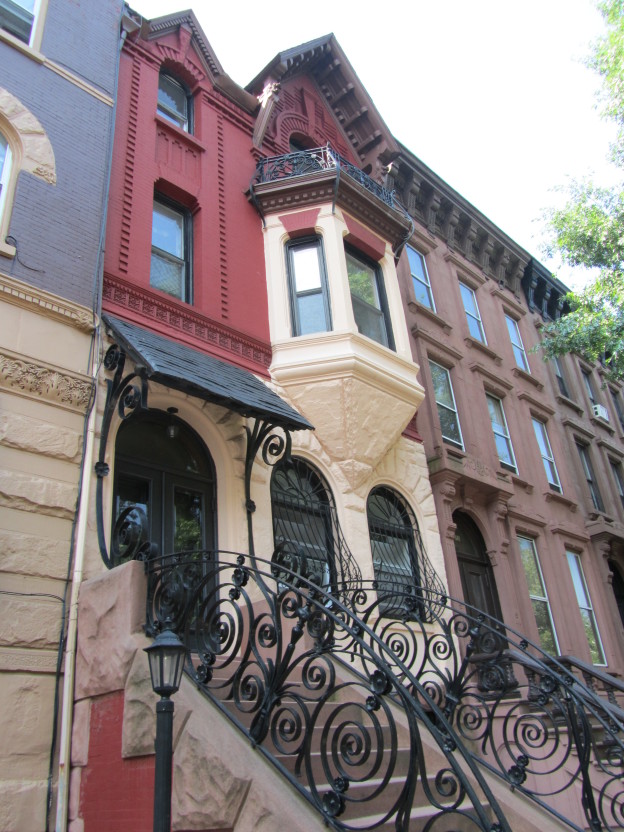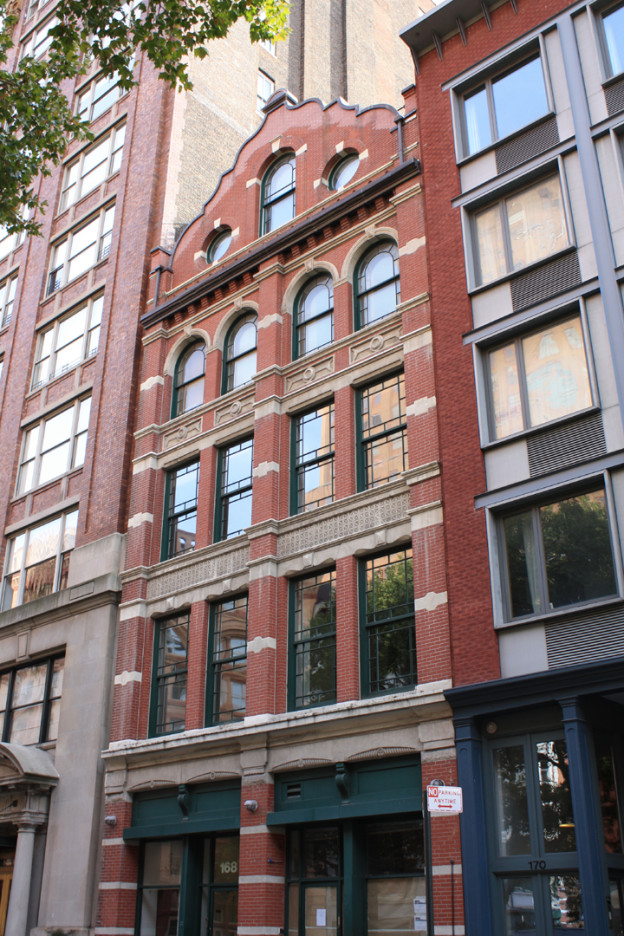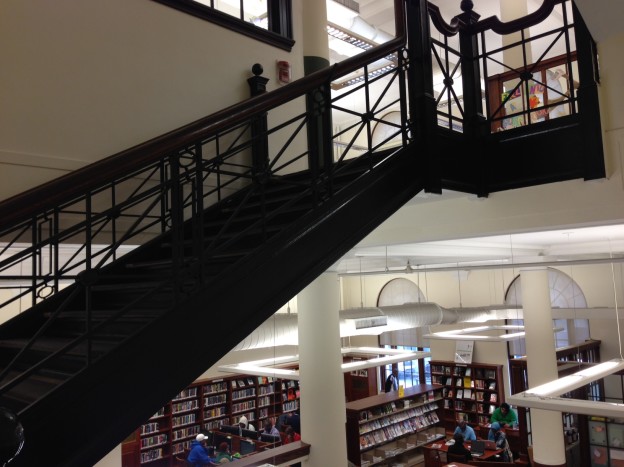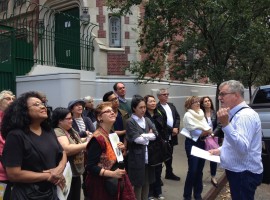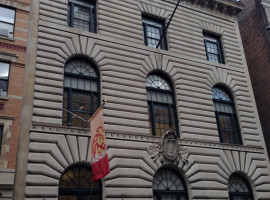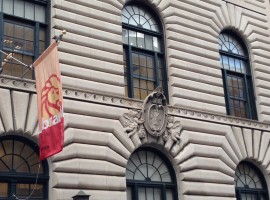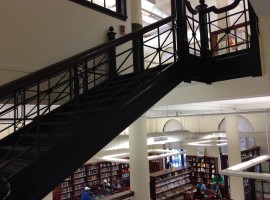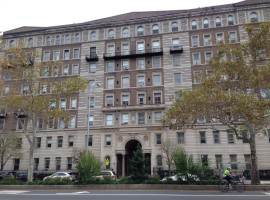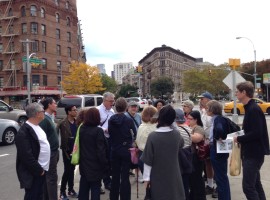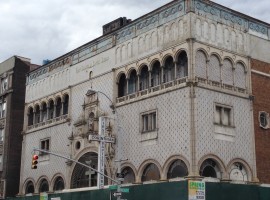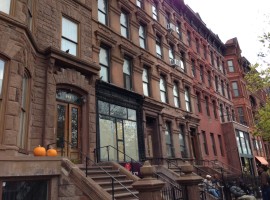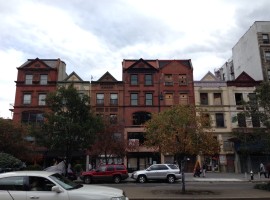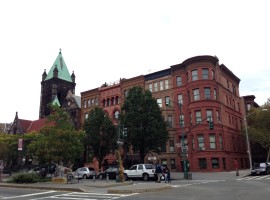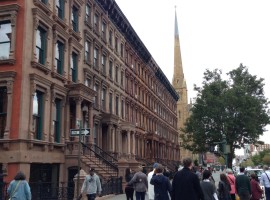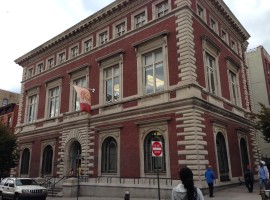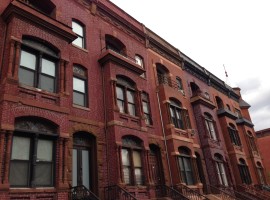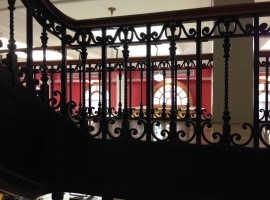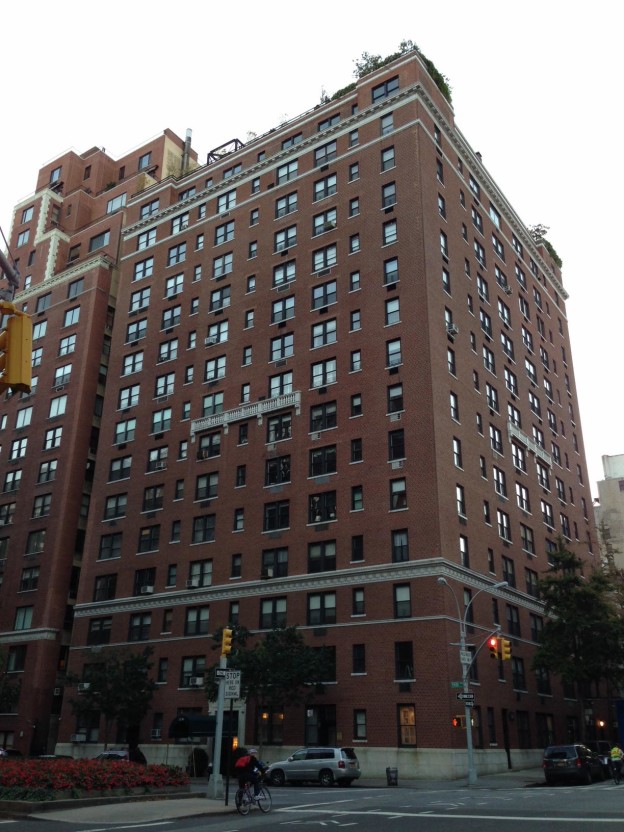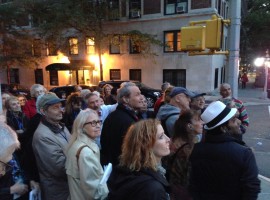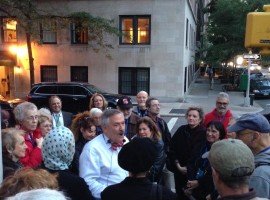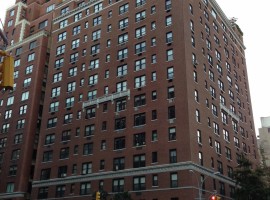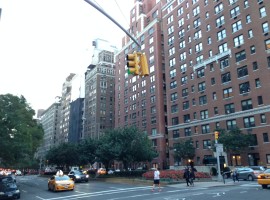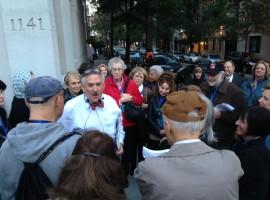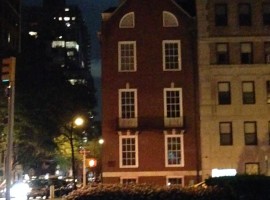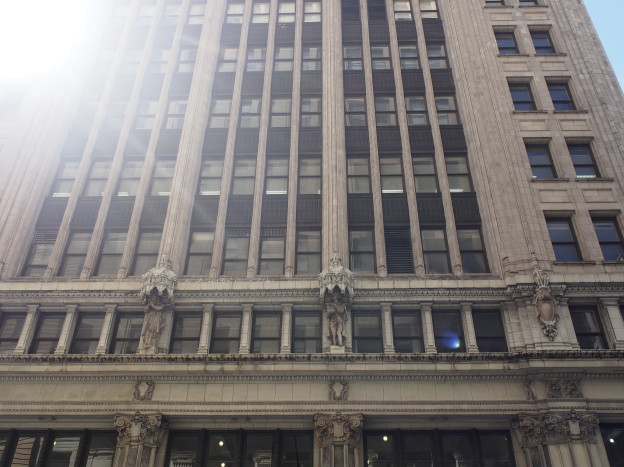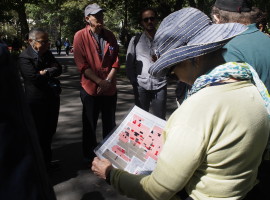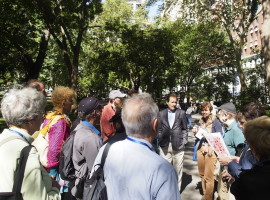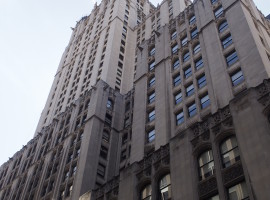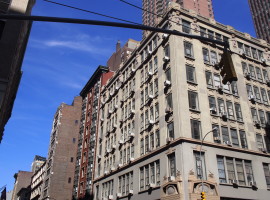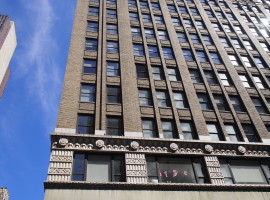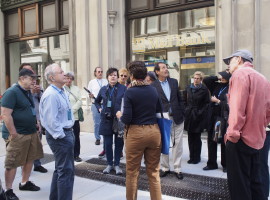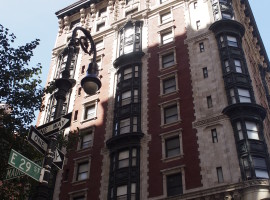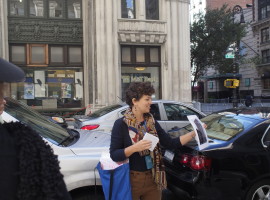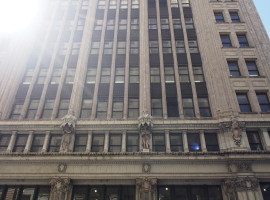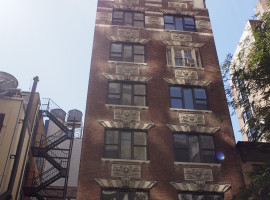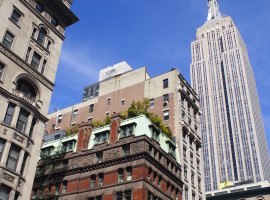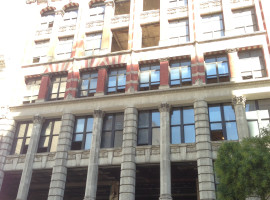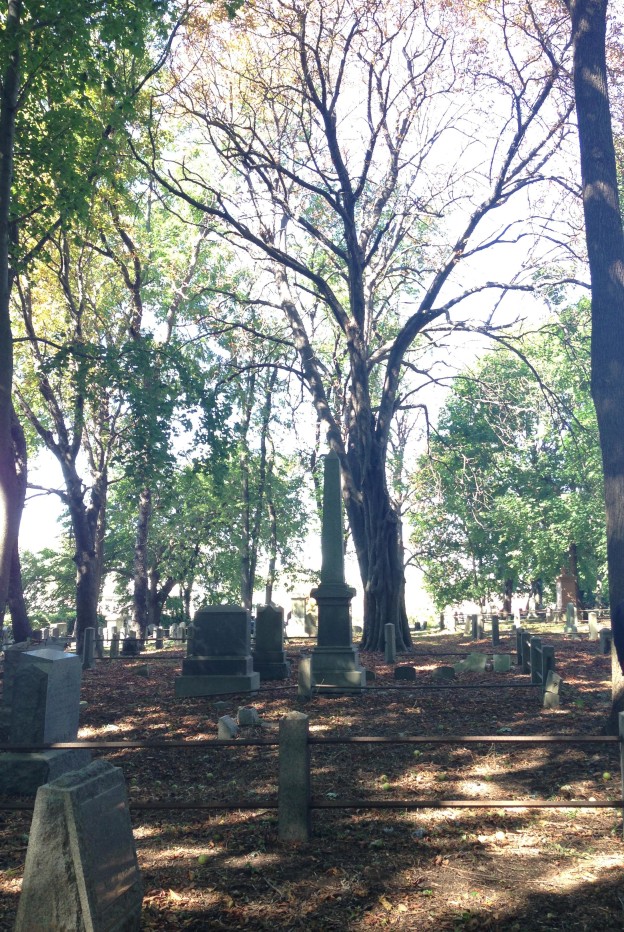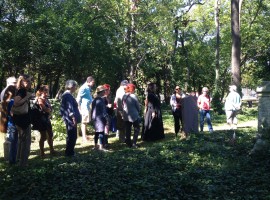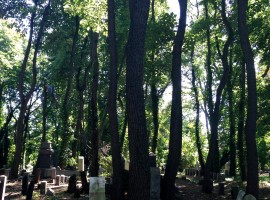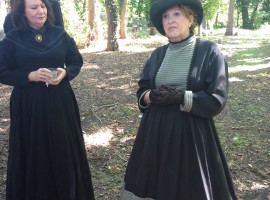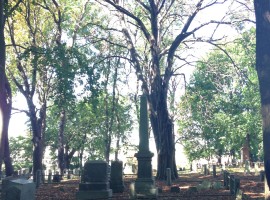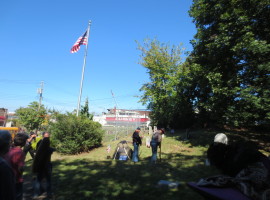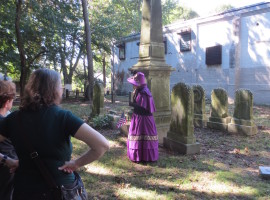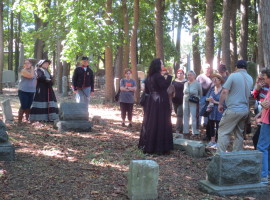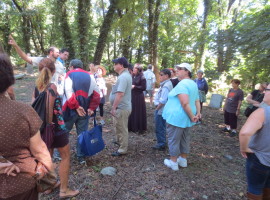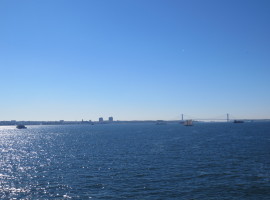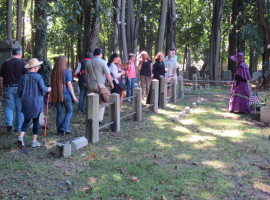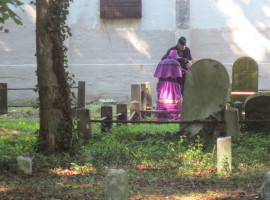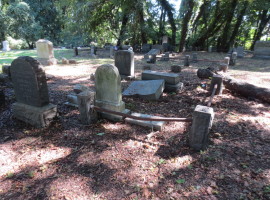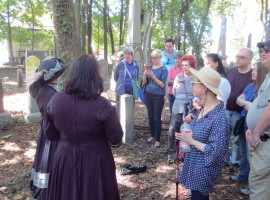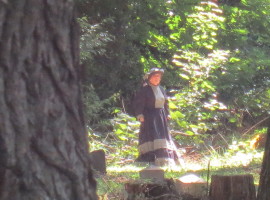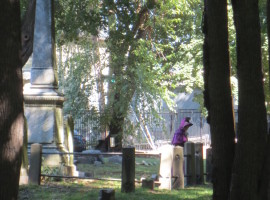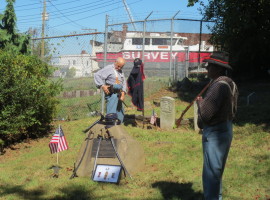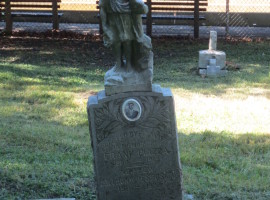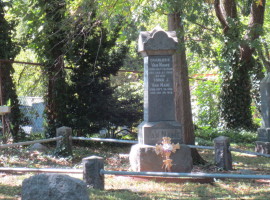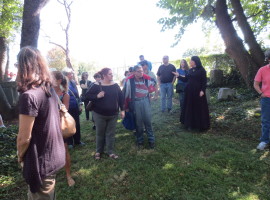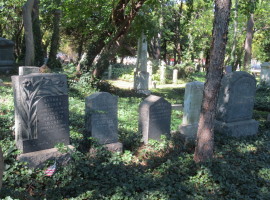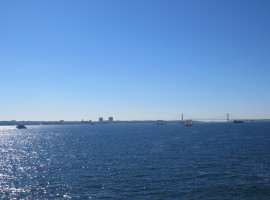
Join us in welcoming the holiday season by reveling in the architecture, charm, and (most importantly) BEER of historic Greenpoint! For our second bar crawl, Preservation Greenpoint will be visiting both neighborhood institutions and relative newcomers, including a repurposed auto-body shop and a one-time plastic bag manufacturer (now named after the first European settler in the neighborhood).
Discover new watering holes, brush up on Greenpoint’s historic architecture and current issues, and join your neighbors for a frosty brew!
Friday, December 5th
Beginning 7pm at Brouwerij Lane (78 Greenpoint Avenue)
RSVP: info@preservationgreenpoint.org
www.preservationgreenpoint.org
The Mount Morris Park Historic District in Harlem was calendared and heard in 1966, just one year after the Landmark Preservation Commission’s creation, and designated five years later. It is a prime example of the overly cautious boundaries set during the early years of the LPC, excluding the area west of Lenox Avenue, not reflecting the traditional extent of the neighborhood and leaving unprotected many buildings of the same character, scale, style and architects as those in the district.
Development began in the area in 1872 when the elevated train was extended north to Harlem. Some of the most elegant rowhouses in the neighborhood were constructed on the blocks around and between Central Park and Mount Morris Park. Like the existing Mount Morris Park Historic District, the proposed extension consists primarily of handsome late 19th- and early 20th-century rowhouses whose Romanesque Revival, neo-Grec and Queen Anne styles inspired by the World’s Columbian Exposition in Chicago of 1893. Larger apartment buildings with similar styles and details can also be found here.
In 2011, HDC chose the first class of our “Six to Celebrate”, New York City’s only list of preservation priorities selected directly from the communities. Placing Mount Morris Park on that list was an obvious choice, given the architectural quality of the neighborhood, the significance of its history to New York City and the strength of its community. The district boundaries set by the National Register of Historic Places in 1973 were expanded in 1996 to include adjoining streets in Mount Morris Park. Recognition and protection of these architecturally significant blocks should be afforded by the city as well.
To read the National Register report click here
To read the chronology of Mont Morris Park click here
To return to the Deserving but not Designated main page click here
Victorian Flatbush is known for being the largest concentration of wooden Victorian-style homes in the country. The area presently has five New York City Historic Districts, but the blocks in between them remain undesignated and unprotected despite architecture of the same vintage and style. Six local groups representing Beverly Square East, Beverly Square West, Caton Park, Ditmas Park West, South Midwood and West Midwood have joined together with the Flatbush Development Corporation to “complete the quilt” of city designation of their neighborhoods.
Six neighborhoods in the Victorian Flatbush community in Brooklyn are joined together in this Request For Evaluation for designation as a single Historic District, complementing the six Victorian Flatbush neighborhoods that have designated. These six additional neighborhoods include Beverley Square West, Beverley Square East, Ditmas Park West, West Midwood, South Midwood, and Caton Park.
In 2012, HDC chose Victorian Flatbush neighborhoods for our “Six to Celebrate”, New York City’s only list of preservation priorities selected directly from the communities. We continue to have the pleasure of working closely with a diverse, intelligent and passionate group of volunteers who are devoted to preserving and protecting their neighborhood. HDC encourages the designation of these neighborhoods as official New York City historic districts as soon as possible so that the rest of the community can enjoy the benefits that landmark designation affords.
To read the full Request For Evaluation click here
To return to the main Deserving but not Designated page click here
-
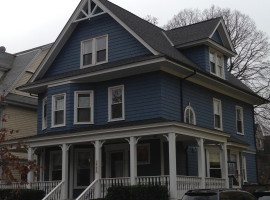
-
Beverly Sq. W.-Westminster bt Beverley and Slocum
-
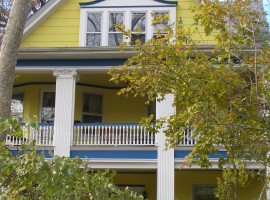
-
Beverly Sq. West- 312 Rugby Road
-

-
Beverley Sq E. -217 E. 19th
-

-
Beverly Sq. W.-Westminster bt Beverley and Cortelyou
-
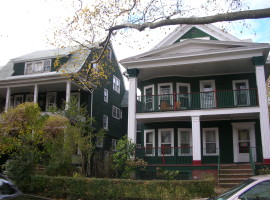
-
W. Midwood- 732 and 738 Westminster
-
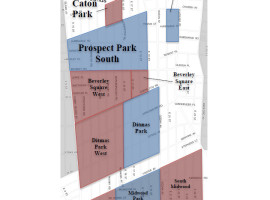
-
Proposed map with existing historic districts
Sunset Park contains one of the city’s earliest and most extensive concentrations of two-family masonry rowhouses, mostly built between 1885 and 1912. The proposed district encompasses representative blocks that best showcase Sunset Park’s architectural contributions to the city. This historic and elegant section of Brooklyn deserves the protection and honor that landmark designation brings.
In 1988, an area encompassing 3,237 buildings in Sunset Park – nearly the entire neighborhood – was listed on the National Register of Historic Places, making it one of the state’s largest National Register Historic Districts. However, without protection by the City, this area has witnessed inappropriate alterations and demolitions, which have inspired local residents to take action to protect their beautiful streetscapes.
The proposed study area outlined in the Request for Evaluation is the result of a careful research, survey and outreach effort on the part of the community including the Sunset Park Landmarks Committee. These blocks were chosen for their outstanding beauty, intact original fabric and resident support. Over roughly 15 months, the Sunset Park Landmarks Committee held and attended numerous meetings; hosted a dozen well-attended walking tours; recruited block captains to manage and help with the survey effort; rallied broad community support and input at several very successful tabling sessions; and engaged with other community organizations and local elected officials.
The proposal represents the desires of the Sunset Park community to safeguard and enhance the beauty of this historic neighborhood, not only for the well-being of the many individuals who live and work here and for the stability that a designation will bring, but to encourage citywide appreciation for the area’s significance. Landmark status will also help preserve the quality housing that draws people of many backgrounds to the neighborhood, making for a characteristically diverse New York City community.
You can view the Request for Evaluation by clicking here
To read the individual building entry Part I click here Part 2 click here Part 3 click here
Read the support letters form elected officials and community organizations by clicking here
-
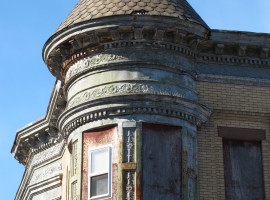
-

-
59 St North Side
-
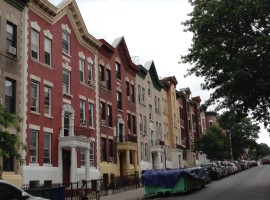
-
40th St btw 4th and 5th Ave.
The architectural splendor of this remarkable Brooklyn neighborhood speaks for itself. It is one of New York City’s richest collections of 19th-century rowhouses, punctuated with handsome small apartment buildings and drop-dead gorgeous institutional structures.
In addition to the obvious architectural merit of the area, the cultural significance of the area is also note-worthy. Bedford-Stuyvesant as a whole, and Bedford in particular, is a supreme example of the enduring value of historic neighborhoods. Built for an immigrant population of Europeans and New Englanders, it became home to another newly-arriving population during the 20th century, transforming into one of the largest and most well-known Black neighborhoods in America. The African- and Caribbean-American New Yorkers who have called this neighborhood home for almost a century have grown deep roots in the community, roots which are nurtured by and have helped protect their fantastic built urban environment. These buildings have been home to generations of New Yorkers and with the LPC’s oversight, they will remain to become the homes and churches and gathering places for generations to come. The proposed Bedford Historic District was heard at a LPC Public Hearing on January 15, 2013, but has not been designated an official NYC historic district.
In 2011, HDC chose the first class of our “Six to Celebrate”, New York City’s only list of preservation priorities selected directly from the communities. Placing Bedford-Stuyvesant on that list was an obvious choice, given the architectural quality of the neighborhood, the significance of its history to New York City and the strength of its community. We continue to have the pleasure of working closely with a diverse, intelligent and passionate group of volunteers who are devoted to preserving and protecting their neighborhood. HDC encourages the designation of Bedford as an official New York City historic district as soon as possible so that the rest of the community can enjoy the benefits that landmark designation affords.
To see the LPC Public Hearing presentation click here
To return to the main Deserving but not Designated page click here
-

-
74 Halsey Street
-
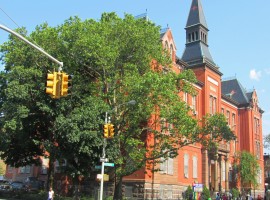
-
475 Nostrand Ave. Girls High School
-
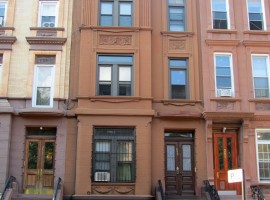
-
259 Jefferson Ave.
-

-
Proposed HD map
-
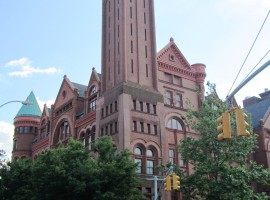
-
832 marcy Ave. Boys School
An Evening with Architects Steven Semes and John Massengale
| When: Saturday, November 154-6 pm: Presentations6-7 pm: Reception |
Where: New York Academy of Art’s Wilkinson Gallery111 Franklin Street, Tribeca(between West Broadway + Church Street) |
Tribeca Trust and Historic Districts Council partner for an evening of lively debate about preservation and urban development
On November 15 at 4 PM, together with the Historic Districts Council, Tribeca Trust will host a controversial conversation about the issues facing historic districts today. The Trust invites guests to hear from two experts on historic districts and urban design. They will unpack arguments that are at the cutting edge of architecture and urban design, all crucial for Tribeca and historic districts citywide.
Tribeca Trust is presenting this event in on of the most beautiful buildings in Tribeca, the 1868 textile building that now is home to the New York Academy of Art at 111 Franklin Street (between West Broadway and Church). Tribeca Trust Founder Lynn Ellsworth will open with an introduction, followed by presentations from Stephen Semes and John Massengale. The audience will have an opportunity to ask questions of the speakers. The presentations will be followed by a cocktail reception, where the speakers will sign their new books: Steven Semes, The Future of the Past: A Conservation Ethic for Architecture, Urbanism and Historic Preservation and Victor Dover and John Massengale, Street Design: The Secret of Great Cities and Towns.
The event is open to the architecture and design community, educational institutions and the general public. Tickets are $15 in advance and $20 at the door, subject to availability as seating capacity is limited. Advance tickets are available here at Eventbrite.

lynnellsworth@verizon.net
Saturday, October 18, 2014 (WALKING TOUR)
Following the July tour of Carnegie libraries in Chinatown, John Bacon, HDC board member and Director of Planned Giving at The New York Public Library, lead another tour of Carnegie libraries in Harlem and Mott Haven. In Harlem, we visited the 115th Street and Harlem Libraries, and viewed the impressive Mount Morris Historic District in between. The tour then traveled to the South Bronx to visit the beautiful Mott Haven Library and take in its notable children’s floor.
Park Avenue, Manhattan
Monday, October 6, 6:00PM (Walking Tour)
The June 17 Six to Celebrate tour of the newly designated Park Avenue Historic District quickly sold out and was extremely well received. As such, Urban Historian Justin Ferate conducted a second tour – beginning at Park Avenue at 91st Street and traveling south along the avenue. The upper segment of the new district boasts of elegant apartment houses by such impressive architects as J.E.R. Carpenter, George & Edward Blum, Mott B. Schmidt, Emery Roth, Mills & Bottomley, and others. In addition, we viewed religious structures by some of America’s noteworthy ecclesiastical design firms: Patrick C. Keely, Cram, Goodhue & Ferguson, and Schickel & Ditmars.
Staten Island’s Historic Cemeteries
Saturday, September 27, 11:00AM (TROLLEY TOUR)
Lynn Rogers, executive director of the Friends of Abandoned Cemeteries of Staten Island, led this trolley tour which explored three cemeteries dating to the early 19th century. Stops included the Marine Hospital/Quarantine Station Cemetery, where thousands of Irish Famine Immigrants were reinterred in April 2014; the Staten Island/Fountain Cemetery & Native American Burial Ground, a haunted site and the city’s largest abandoned cemetery (8 acres); and Lake Cemetery, a working class cemetery where many Civil War and WWI Veterans were buried.

